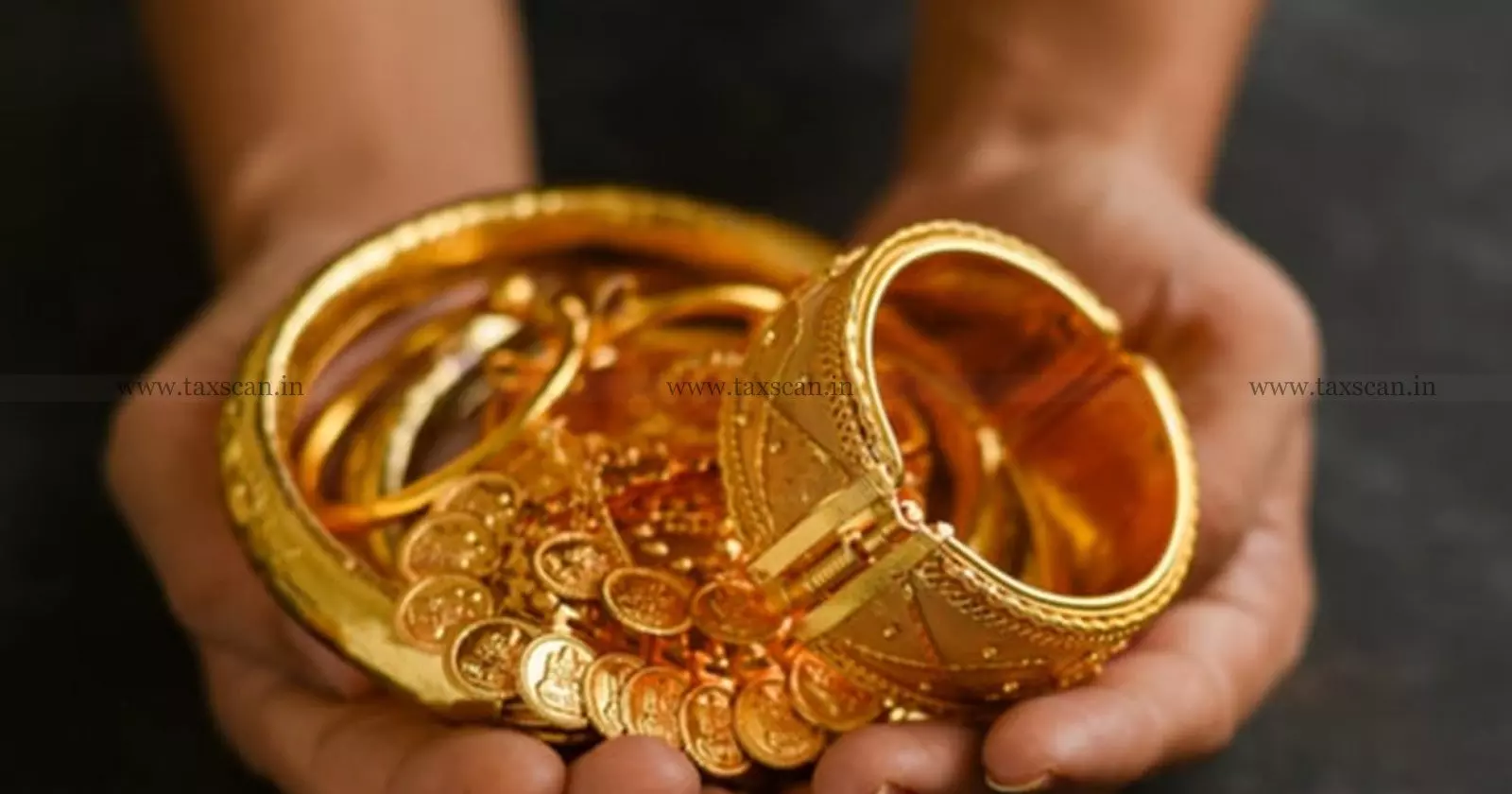GST on Gold Jewellery 2025: Know the Rules, Rates and Calculation Method
Indian households hold nearly 11% of the world’s gold, and with GST fixed at 3 percent on gold value and 5 percent on making charges.

Did you know that Indian households, especially women, hold nearly 25,000 tonnes of gold, about 11% of the world’s total gold reserves? According to estimates by the World Gold Council, Indian wives and mothers together own more gold than the reserves held by the United States, Germany, and the International Monetary Fund combined.
Since the introduction of GST in 2017, what often confuses buyers is how the Goods and Services Tax (GST) affects the final price of gold jewellery and with the more recent GST 2.0 reforms in 2025, the tax structure for gold has become clearer and more uniform across the country.
Current GST Rates on Gold Jewellery in 2025
As of now, the GST rate on gold jewellery follows a two-part structure that has remained unchanged since GST was first introduced:
- 3% GST on the value of gold (split equally between CGST and SGST).
- 5% GST on making charges (also split equally between CGST and SGST).
These rates apply to all types of gold jewellery, whether it is 24-carat, 22-carat, 18-carat, or 14-carat. The GST Council decided not to change these rates under the GST 2.0 reforms to maintain stability in the market.
This dual-tax system replaced the earlier mix of excise duty, VAT, and service tax, which used to vary between 1 and 1.2% depending on the state. The result is a much more transparent and consistent tax regime across India.
Master the Latest Amendments in Income Tax Act Click here
How GST 2.0 Affects Gold Prices
GST 2.0 simplified tax slabs across the country but it did not change the tax rates on gold and silver jewellery. The Council wanted to maintain consistency in the precious metals sector because of its cultural and financial importance.
A huge development came in the form of reduced import duties. The government lowered the total import duty on gold from around 15% to 6%, which includes 5% Basic Customs Duty and 1% Agriculture Infrastructure and Development Cess.
When we include GST on top of this, the total effective tax burden on imported gold now stands at about 9%, compared to nearly 18% in previous years.
How GST on Gold Jewellery is Calculated
There are two common ways jewellers calculate GST on gold jewellery.
Method 1: Separate billing for gold and making charges
This is the most transparent method and is recommended by the Central Board of Indirect Taxes and Customs (CBIC). Here, GST is applied separately on the gold value and on the making charges.
Formula:
- GST on Gold = Gold Value × 3%
- GST on Making Charges = Making Charges × 5%
- Total GST = (Gold Value × 3%) + (Making Charges × 5%)
- GST on gold = Rs. 3,000
- GST on making charges = Rs. 500
- Total GST = Rs. 3,500
- Final price = Rs. 1,10,000 + Rs. 3,500 = Rs. 1,13,500
Method 2: Single composite price
Sometimes, jewellers issue a single invoice without separating gold and making charges. In that case, the entire transaction is treated as a composite supply, and 3% GST is applied on the total value.
- Final price = Rs. 1,13,300
Both methods are acceptable, but asking your jeweller for a detailed breakdown gives you a clearer idea of what you are paying for.
Comprehensive Guide of Law and Procedure for Filing of Income Tax Appeals, Click Here
Special Cases in GST on Gold Jewellery
There are a few other scenarios where GST rules vary slightly.
- Exchange of old gold: When you exchange old jewellery for new, GST is applied only on the price difference between the new piece and the value of the exchanged gold. If your new jewellery costs Rs. 40,000 and your old piece is valued at Rs. 20,000, GST will apply only to Rs. 20,000, not the full Rs. 40,000.
- Studded jewellery: If your jewellery includes diamonds or gemstones, the entire item is taxed at 3% under GST. Since gold is considered the main component, the same rate applies to the full value, including the stones and design.
- Hallmarking: Hallmark certification from the Bureau of Indian Standards ensures purity and authenticity. The small hallmarking fee, usually between Rs. 200 and Rs. 500, is treated as a service and attracts 18% GST.
- Digital gold: Online gold purchases attract the same 3% GST as physical gold. The tax applies to the purchase value, storage fees, and trustee fees.
GST Compliance for Jewellers
For jewellers, the GST framework brings certain obligations. A business must register under GST if its annual turnover exceeds Rs. 40 lakh for goods or Rs. 20 lakh for services. For gold movements worth Rs. 2 lakh or more within a state, an e-way bill is required.
Jewellers can claim input tax credit (ITC) for the GST paid on raw gold purchases, fabrication, and job work services. If they buy services from unregistered artisans, they have to pay 5 percent GST under the reverse charge mechanism, but they can later claim that as ITC.
Exemptions and Export Benefits
Gold received as a gift from specified relatives such as parents, spouse, siblings, or children is fully exempt from income tax. Gold received as a marriage gift is also tax-free.
For exporters, gold jewellery is treated as zero-rated under GST. Exporters can claim a refund on the GST paid for inputs used in manufacturing. The government has also increased duty drawback rates for exporters, helping them stay competitive in global markets.
Support our journalism by subscribing to Taxscanpremium. Follow us on Telegram for quick updates


